Aviation anti-tank missile system "Whirlwind-M". Potential and application
In service with the army and front aviation The Russian Aerospace Forces consists of several anti-tank missile systems. One of the newest and most advanced is the 9K121M "Vikhr-M", used by attack helicopters. In the recent past, it was actively used in Syria and confirmed the design characteristics. Now the Vikhr missiles and their carriers are participating in the processes of demilitarization and denazification of Ukraine, and again they are showing the required results.
Way to the troops
The development of the 9K121 Vikhr aviation anti-tank missile system with the 9M127 missile started at the end of the seventies and was carried out by the Tula Instrument Design Bureau. In 1985, the new ATGM was officially adopted by the USSR Air Force. A few years later, in 1990, the upgraded 9K121M Vikhr-M complex with the 9M127-1 Vikhr-1 missile received a recommendation for adoption.
However, it was not possible to launch mass production of 9K121 complexes and missiles for them due to general economic and defense problems. Nevertheless, the search for opportunities to launch the series and for the further development of anti-tank systems continued. Active work in this direction began again in the XNUMXs and gave real results at the beginning of the next decade. The newly improved complex "Vikhr-M" was brought to mass production and deliveries to the troops.
In 2013, the Ministry of Defense issued the first contract for the mass production of ATGM 9K121M. The Kalashnikov Concern was chosen as the contractor. In the coming years, he was supposed to manufacture and supply a large number of sets of equipment and more than 2 thousand missiles. The total cost of production is more than 13 billion rubles. The order was successfully completed in 2015-16, and a large number of new missiles appeared in warehouses. Their carriers were serial Ka-52 helicopters.
After completing the first order, the Kalashnikov Concern received two new ones. The first was again placed by the Ministry of Defense; it provided for the delivery of several thousand missiles over the next three years. The second contract was for export. An unnamed foreign army wished to receive a large number of Vikhr-M anti-tank systems with delivery within two years. To date, these orders have been successfully completed, and production continues in accordance with the following agreement.
Combat application
Since the beginning of the eighties, 9K121 (M) anti-tank systems have been regularly used at training grounds for training purposes - as part of various tests or during army exercises. The launch of full-scale production made it possible to establish a full-fledged preparation process. Combat crews of Ka-52 helicopters are learning to use the new weapon and gain the necessary experience.
The first cases of combat use of the Vikhr-M complex in a real military operation date back to 2017. During the fighting in Syria, Russian helicopters repeatedly used 9M127-1 missiles against various ground targets. The complex has confirmed its ability to hit stationary and moving ground targets, incl. armored.
Right now, Russian Ka-52 pilots are taking an active part in the Special Operation for the Defense of Donbass and performing a wide range of tasks involving the search for and destruction of ground targets. To combat various types of armored vehicles, several types of ammunition are used, incl. guided missiles "Whirlwind-1". These products are successfully aimed at the intended targets, and the warhead ensures the confident defeat of any tanksavailable to the enemy.
Judging by the published information, to date, at least dozens of tanks and other armored vehicles have been destroyed with the help of 9M127-1. But it cannot be ruled out that there are already hundreds of targets on the combat account of such weapons, and in this respect they bypass other means of destruction. Obviously, the combat work of helicopters will continue, and the Vikhr-M ATGM will show new successes.
Technical features
Product 9K121M "Whirlwind-M" is an anti-tank missile system for modern domestic combat aircraft and helicopters. It is intended to combat protected ground targets and some aircraft.
The main element of the complex is the 9M127-1 supersonic guided missile. It is built in a cylindrical body with a length of 2,75 m and a diameter of 130 mm with a pointed head fairing. Starting weight - 45 kg. The missile is delivered in a closed transport and launch container. The mass of the product in the TPK is 59 kg.
In the head part of the rocket there are deployable rudders, in the tail part there is a wing. The span of the planes is up to 380 mm. The head compartment of the rocket contains the leading charge of the warhead and the air-dynamic drive of the rudders. Behind them is a compartment with rudders and their drives, behind which is the main warhead. A solid propellant engine with side nozzles is placed in the center of the body. The tail compartment is given over to the guidance equipment.
The existing engine provides the rocket with high flight characteristics. The average flight speed reaches 600 m/s, the maximum range is 8 km. The flight of the rocket to the maximum range takes 23 seconds. The speed and maneuverability of the missile make it possible to attack both armored vehicles and air targets at a flight speed of up to 800 km/h.
The missile is equipped with a tandem cumulative fragmentation warhead weighing 12 kg. There are contact and non-contact fuses. The warhead provides penetration of at least 750 mm of armor behind reactive armor.
The missile is guided from the carrier board using the I-251 Shkval-M control device. From a distance of at least 10-12 km (during the day), this device can detect and take a target for auto-tracking. The object is then illuminated by a laser beam, along which the missile is guided. The 9M127 product tracks the beam using receivers in the tail section and is kept on the desired trajectory.
ATGM "Whirlwind" was created for use by Su-25T attack aircraft, as well as attack helicopters Ka-50/52 or Mi-28. However, not all of these opportunities have been realized. Vikhr-1 missiles are actually used only on the Ka-52. TPK with products are placed on APU-6 or APU-8 launchers - 6 or 8 units each. on one external suspension unit.
In 2021, the Vikhr-M complex was tested on the Inokhodets reconnaissance and strike UAV. They confirmed the fundamental possibility of using existing missiles on a new drone. Perhaps in the near future this concept will reach full implementation and implementation in the troops.
With well-known benefits
Despite their considerable age, ATGMs of the Whirlwind family are still modern weapons suitable for solving all major combat missions. All components of the complex meet the requirements; 9M127-1 missiles retain high flight and combat characteristics.
A significant contribution to the overall efficiency of the complex is made by the high flight performance of the rocket. The range of the 9M127-1 product allows you to carry out attacks from outside the reach of common air defense systems and other short-range means. At the same time, the high speed of the rocket allows the helicopter to quickly carry out an attack and avoid possible shelling.
Guidance along the laser beam is characterized by high noise immunity. For obvious reasons, the enemy does not have the ability to suppress the control beam coming from the rear hemisphere. In addition, the carrier helicopter may not keep the beam on the target during the entire flight of the missile. The laser can be aimed at it only seconds before the arrival of the ammunition. In this case, the armored vehicle, even having discovered the fact of illumination, will not have time to take action.
A tandem warhead with a penetration of 750 mm allows you to confidently hit the frontal projection of some main tanks, incl. equipped with dynamic protection. The fragmentation jacket of such a warhead inflicts additional damage to the external equipment of the target tank, and also affects surrounding vehicles or manpower.
It should be noted that the 9K121M complex has some ambiguous features. First of all, this is missile control from the carrier. Until the moment of impact, a direct line of sight of the target is required, which exposes the helicopter to a certain danger. It is also unclear the potential of a regular warhead when working on modern MBTs with a full range of additional protection.
High scores
The Vikhr family of missile systems is quite old: the first sample was put into service 37 years ago. However, real and mass introduction began only in the middle of the tenth years, and this would be the latest modification of the ATGM with the newest missile. Due to a number of improvements, it was possible to obtain high performance and broad capabilities that are fully consistent with modern requirements for helicopter armament.
Over the past few years, the Vikhr-1 missiles from the Vikhr-M complex have been regularly used in real combat missions to destroy armored vehicles and other enemy targets. In such events, they repeatedly showed their technical and combat potential. And more confirmations are coming in right now. All this makes it possible to consider the 9K121M Vikhr-M ATGM as at least one of the best domestic developments in its class.
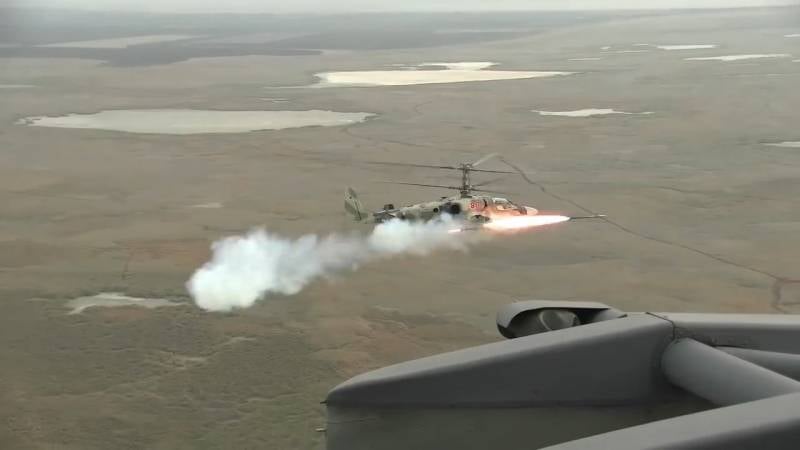
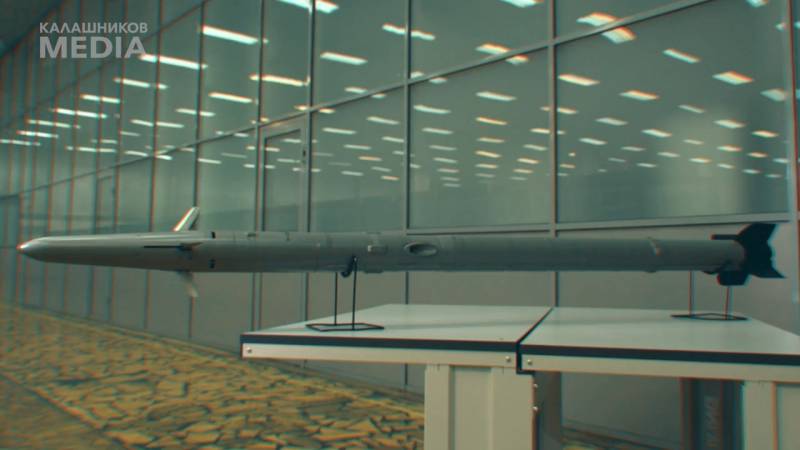
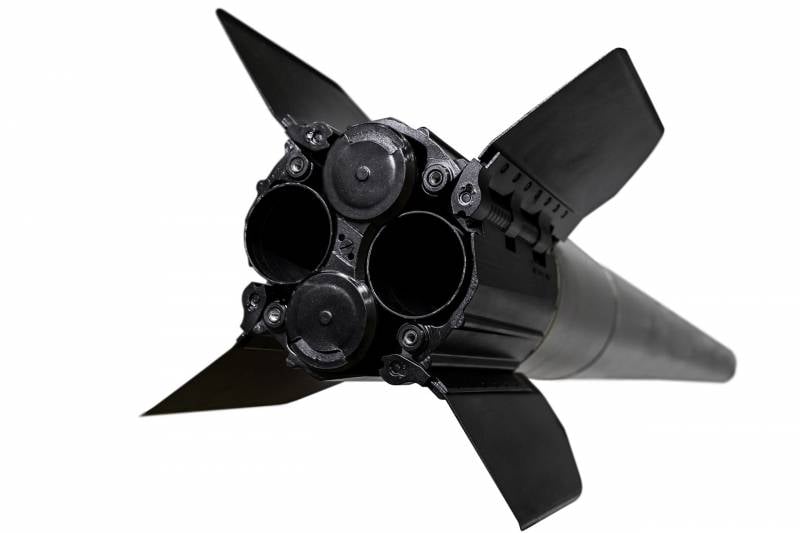
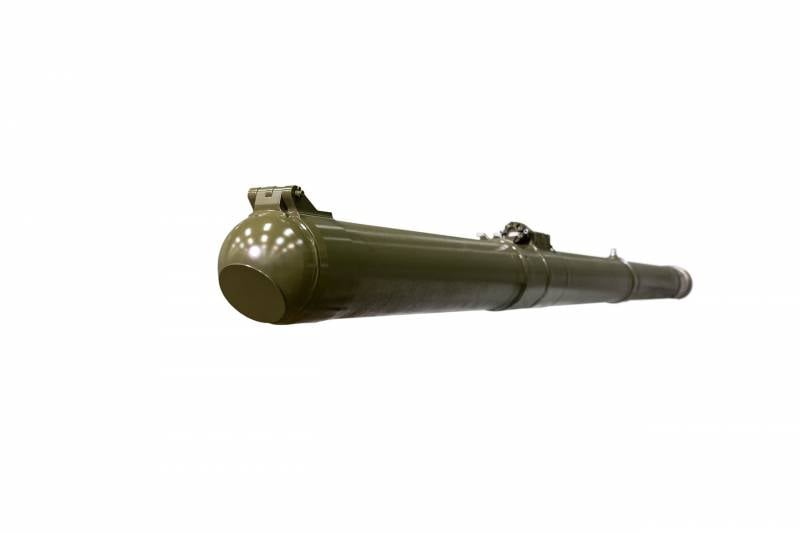
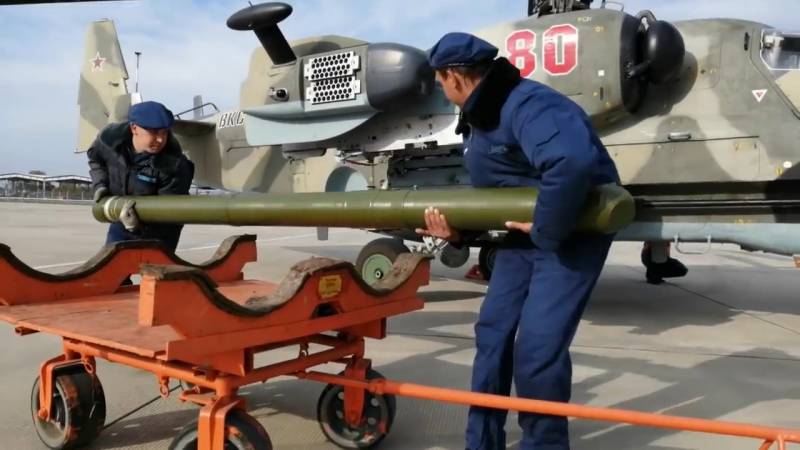
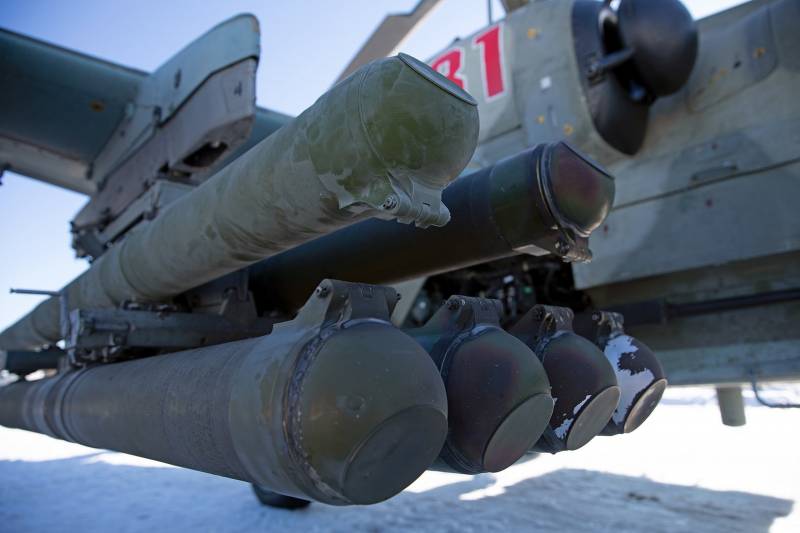
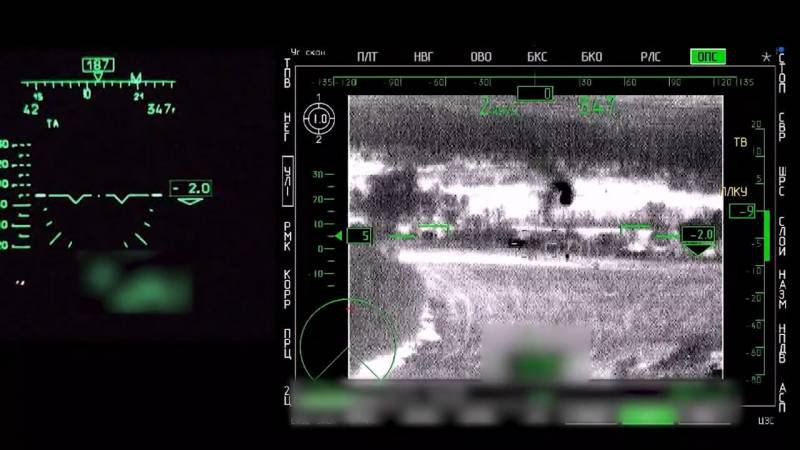
Information